For A Century or Beyond Kashmir Conflict Remains An Euphemism for Islamic Jihad :
SHEWANTAK BHUSHAN
https://www.myind.net/century-and-beyond-kashmir-conflict-remains-euphemism-islamic-jihad
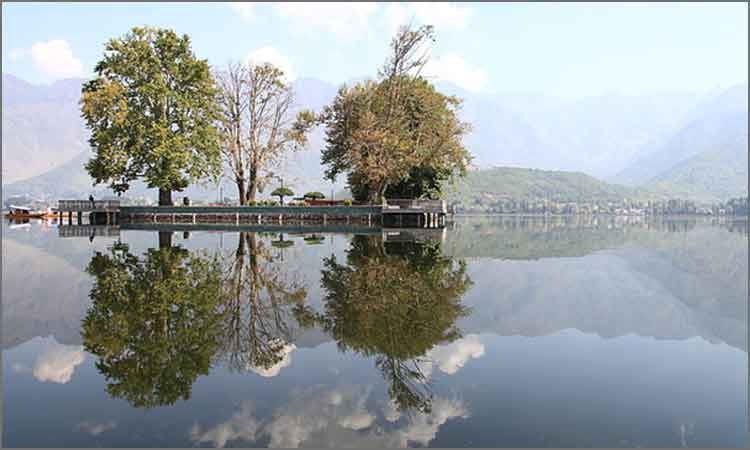
Part 1: THE BACKGROUND: Once upon a time, Amir Khusro, One of the Greatest Poet of our Country said a couplet in Farsi:Gar firdaus ruhe zamin ast, hamin asto, hamin asto, hamin ast.” (If there is heaven on earth, it’s here, it’s here, it’s here!)
But what comes to mind when one thinks of Kashmir today?
A Jihadi-terror network, Pakistani insurgency, Indian Army all over, some missing Kashmiris, stone pelting, terrorists’ encounters, Article 370, and Kashmiri Pandits’ exodus. I remember while growing in eastern part of India, all we knew about Kashmir was heavenly valleys, apple orchards, Pashmina shawls, intricate carpets, and Gushtaba.
How then did the heaven turn into a hell? It’s a long story.
It can be rightly said that Kashmir is the cradle of Hindu Civilization. The archaeological discoveries of Mohenjodaro and Harappa revealed that Kashmir Shaivism is the oldest spiritual path still practiced in India with an ancient history of at least 5000 years. Later Buddhist philosophy also thrived there, as noted by Dr. P. C. Bagchi, an Indologist of repute; “Kashmir was the most flourishing center of Buddhist learning in the 6th century and took the leading role in the transmission of the Buddhist thought and traditions directly to Tibet and China.”
From 1339, since the reign of Shah Mir till 1819, when Maharaja Ranjit Singh liberated Kashmir from an alien, hostile Islamist Afghan rulers, indigenous non-Muslims have been at the receiving end of varying hues. There was brief respite during 1819-1930, thanks to the Sikh-Dogra kings. The last king of ‘Riyasat-e-Kashmir’, Maharaja Shri Hari Singh Ji Bahadur was a Hindu while the majority population was Muslims.
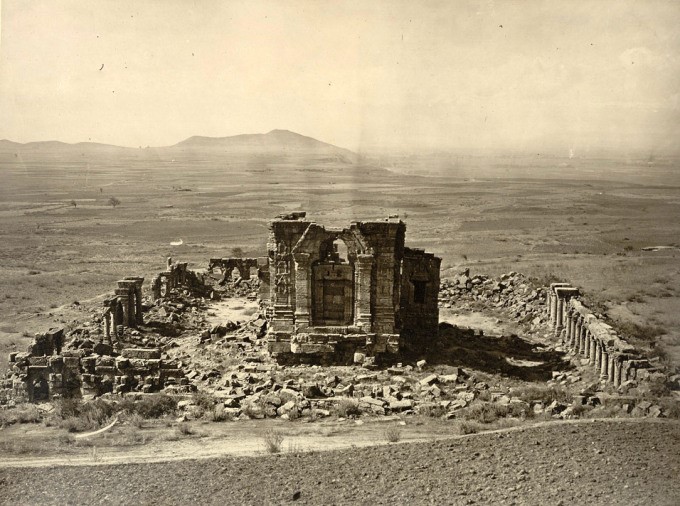
Dedicated to Surya, the Sun God, Martand Sun Temple, located near Anantnag, which now lies in ruins was built in the 6th century. Photo by John Burke (1868).
Another key character, Sheikh Abdullah, who was Born in Soura, (a village on the outskirts of Srinagar), after the death of his father Sheikh Mohammed Ibrahim (descendant of a Kashmiri Pandit named Rago Ram Kaul who converted to Islam in 1722 A.D. as per “Atish-e-Chinar”).
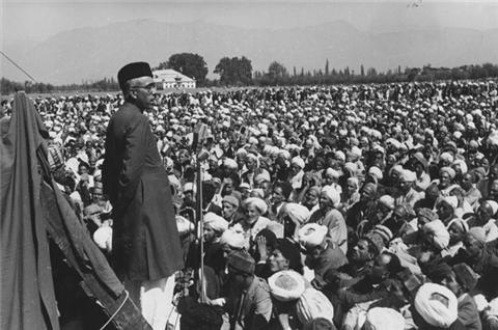
Sheikh Abdullah addressing Kashmiris – Source: Radiance Weekly
Sheikh was a compelling orator and at 6′-4″, he was an inspiring presence. He started his speeches questioning religious prejudice, like, why the Muslim community is singled out and are continuously oppressed in a Muslim-majority Kashmir. He would visit the mosque every Friday and quote Quran to instigate unrest among Muslims. He was a rising star of Kashmir politics, and common Kashmiris looked up to him.
In 1931, the British wanted Maharaja Hari Singh to lease them the Gilgit agency, but the Maharaja was reluctant. Maharaja Hari Singh’s intention could be measured by the words that he said during the 1931 Round Table Conference in front of British Crown: “I am an Indian first and then a Maharaja.”
The British brought a rabble-rouser Abdul Qadir from Peshawar into Srinagar in the garb of a cook for the local British resident. The politically hyperactive Sheikh Abdullah was also roped in. A public meeting was organized at the Shah-e-Hamdan, Khanqah Mohalla. Abdul Qadir quoted the Quran to incite the Muslims for Jihad against the Maharaja. Spewing communal venom and inflaming passion and it was asserted that the book forbade Muslims to subject themselves to an infidel Hindu ruler.
Abdul Qadir was ordered to be arrested for sedition. His arrest was resisted, and his trial too was repeatedly disrupted. It was decided to hold his trial in the jail premises itself. On that day, a mob stormed the jail and attacked the administration. The police force was called in. But all efforts to pacify the unruly mob proved futile. The first ever organized violent Islamist Jihad in the recorded history of modern Kashmir took place on this date, the 13th of July, 1931.
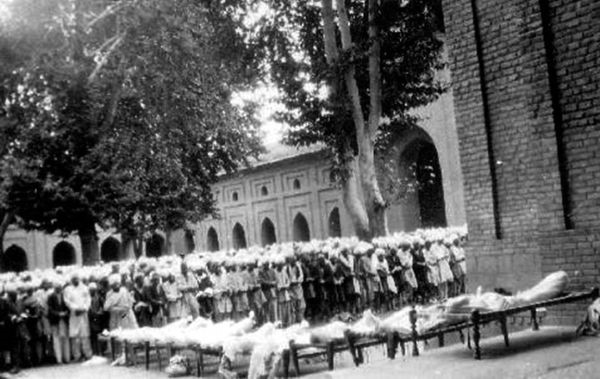
Hindu shops were raided, girls and women raped and molested The pandemonium continued over into weeks and months. Countless Hundreds burnt alive, murdered, maimed, raped, molested, robbed and some were even forcibly converted to Islam. When these Jihadis were challenged by the police, some of them died. The dead rioters were hailed as martyrs by their cohorts. It’s an irony that in independent India, the state Govt of J&K formally sanctified those Jihadi terrorists and decided to commemorate them as fallen heroes, every year on July 13.
A myth was propagated that it was a “democratic” uprising, to uproot the prevailing “feudal” order. In fact, it was an Islamist Jihad against the Hindu rule.
Sheikh Abdullah was also found complicit in the carnage and was arrested, tried, convicted and sent to prison. But even before completion of his sentence, was released by Maharaja Hari Singh. Soon, Kashmir’s first political party the Kashmiri Muslim Conference with Sheikh Abdullah as President was formed on 16 October 1932. Sher-e-Kashmir, Sheikh Abdulla was everywhere. Sheikh was introduced to Jawaharlal Nehru in 1937, and soon the two became close friends and political allies. Nehru declared:
‘Sheikh Abdullah of Kashmir does not have even one single communal bone in his body.’
Sheikh got enough hint from Nehru, but it took him two years to achieve the first step in becoming a mainstream politician. On 11 June 1939, the Muslim Conference became National Conference.
All that Sheikh now needed was a landmark protest. Taking a cue from 1942 Quit India, on 10th May 1946, Sheikh Abdullah launched the ‘Quit Kashmir’ movement against the Maharaja. On 17th May 1946, in his inflammatory speech against theHindus and the Maharaja, he called for ‘Jihad’ exhorting:
“It is time for action. You must fight slavery and enter the field of ‘Jehad’ as soldiers. Every man, woman and child will shout ‘Quit Kashmir.’ The Kashmiri nation has expressed its will. I will ask for a plebiscite.”
Meanwhile, in 1946, when the Indian National Congress had to elect a new president, 12 out of 19 Pradesh committees nominated Patel, and none nominated Nehru. But Nehru was elected unopposed. That is how India got a Kashmiri Pandit as its first prime minister.
After election as Congress president, Nehru gave his support to his friend Sheikh Abdullah who had been jailed by Hari Singh. In June 1946, when Nehru decided to go to the valley to free Abdullah, the situation was certainly not shining in Kashmir and to take on the Maharaja at this point was a grave mistake. The members of the working committee and especially Sardar Patel tried to dissuade him saying there were more important works in Delhi like discussing the transfer of power.
In a letter to D P Mishra, Patel pointed out the two dominant and opposing aspects of Nehru’s personality:
‘He [Nehru] has done many things recently which have caused us great embarrassment. His actions in Kashmir, are acts of emotional insanity, and it puts tremendous strain on us to set the matters right. But in spite of all these innocent indiscretions he has unparalleled enthusiasm and a burning passion for freedom.’
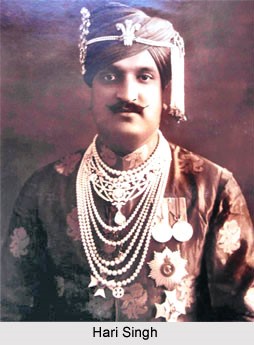
But it was still 1946, and Nehru was stopped by a very confident Maharaja Hari Singh. Nehru took it as an insult and after that incidence never forgave Maharaja.
When India awakened to life and freedom, Maharaja Hari Singh remembered the events of the previous year, and while most princes signed the ‘Instrument of Accession’ to India, Hari Singh prevaricated. Nehru’s overture to Sheikh and open dislike for Maharaja had made Hari Singh very skeptical. On one side Sheikh Abdullah has been vying for his blood and saw no scope of being treated fairly by Nehru. On the other hand were the machinations of Jinnah. Maharaja could not take a decision even after the deadline of August 14, 1947.
At the time of independence, India was divided into two types of territories. The first was under the control of the British Empire, and the second were under the rule of their hereditary rulers. Also, there were several small colonial enclaves controlled by France and Portugal. The political integration of these territories into India was the most critical objective of the Sovereign India.
While all the Kingdoms, Nizams, and Nawabs were busy showing off their wealth and size of Riyasats, a phenomenon called Sardar Patel happened. The then Home Minister United 561 States covering 800,000 square kilometers and containing a population of 40 million diverse people into the Union of India in six months time without shedding blood or going to war. It was the sheer talent of V. P. Menon guided by Patel’s determination that they could execute the unification process.
Sardar Patel tried to retrieve the lost ground in Kashmir due to Nehru’s recklessness. On 3rd July 1947, he wrote directly to the Maharaja:
“I am sorry to find that there is considerable misapprehension in your mind about the Congress. Allow me to assure your Highness that the Congress is not only not your enemy, as you happen to believe, but there are in the Congress many strong supporters of your state. Pandit Jawaharlal Nehru belongs to Kashmir. He is proud of it and be rest assured; he can never be your enemy. As a sincere friend and well-wisher of the state, I wish to assure you that the interest of Kashmir lies in joining the Indian Union and its Constituent Assembly without any delay.”
On 11 August 1947, the Maharaja dismissed his Prime Minister Ram Chandra Kak, who had advocated independence for the state which was an action as a tilt towards accession to India. In September, he decided to offer Kashmir’s accession to India, and his only concern was Sheikh Abdullah. Nehru refused it by demanding that Sheikh Abdullah is freed and installed as prime minister of the state at the first place, which was not acceptable to the Maharaja.
Pakistanis decided to preempt this possibility by wresting Kashmir by force if necessary. First Pakistan made various efforts to persuade the Maharaja of Kashmir to join Pakistan. Faced with the Maharaja’s indecision, Pakistan planned an operation, codenamed ‘Gulmarg,’ to invade J&K. On October 22, 1947, about 5,000 Pathan tribesmen led by Pakistani Army regulars attacked the region. One plan called for organizing an armed insurgency in the western districts of the state and the other for having organized a Pashtun tribal invasion and formed a provisional Azad Kashmir govt based in Palandri capturing and taking control of most of the western parts of the State
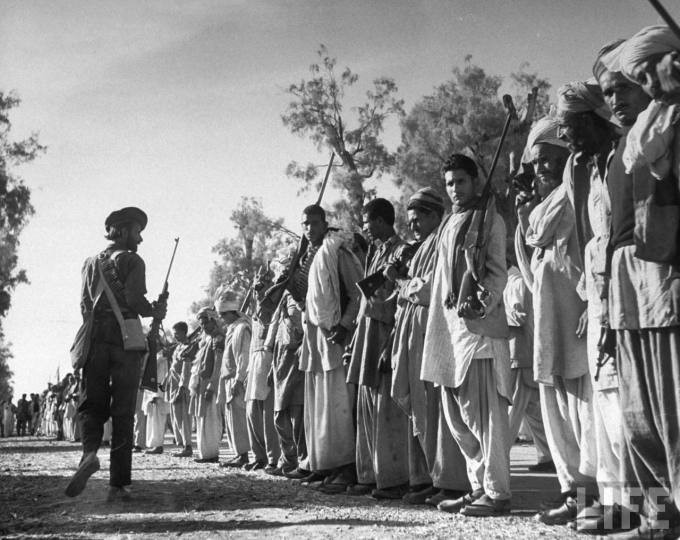
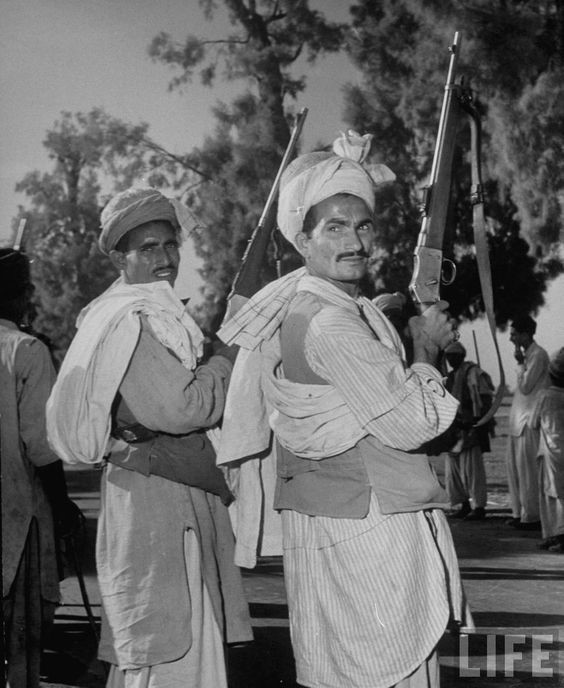
Pathan Jihadi tribes were brought from FATA (today’s Taliban region) during the 1947 Indo-Pakistani War. Their motto was “Zar Zan Zameen”= Gold, Women Land.
Rebel forces from the western districts of the State and the Pakistani Pashtun tribes made rapid advances into the Baramulla sector. Here the tribal intruders were terribly indulged in collecting and dividing war bounty, instead of exploiting their initial success. However, the mujahideen stopped to loot, rape women, kill the inhabitants, burn houses, and abduct young women. They raped Hindu and Muslim girls and also the nuns of hospitals and convents while Maharaja Hari Singh was clueless just 50 KMs away. By the time he could assess the urgency, it was too late.
Hari Singh made a desperate call, but Delhi took a bizarre stand and conveyed that it was not in a position to rescue him. The intruders massacred about 11,000 of 14,000 residents of Baramullah on October 26 and blocked electricity supply to Srinagar by destroying Mohra power station.
Delhi received another wire from Hari Singh. V P Menon was sent to Kashmir while Hari Singh was called to Jammu. V P Menon came to Delhi along with the Maharaja’s nominee Mehr Chand Mahajan who requested Nehru and Patel for essential supplies which had been blockaded by Pakistan and also communicated the Maharaja’s willingness to accede to India.
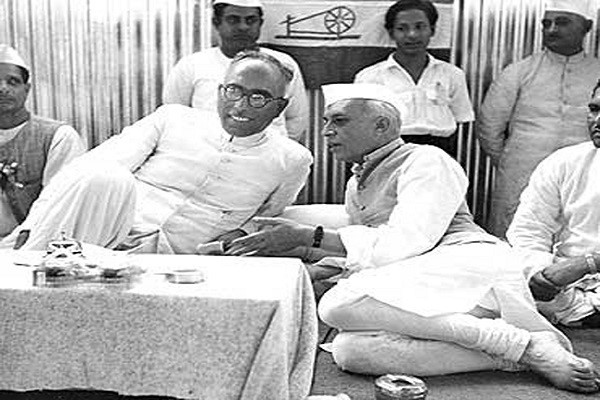
Sheikh Abdullah and Jawaharlal Nehru during Congress committee meeting.
A cabinet meeting was held, the document with the terms of accession prepared and on Nehru’s firm demand, Sheikh Abdullah was released and made Prime Minister of Jammu & Kashmir.
When Hari Singh signed the ‘Instrument of Accession,’ a historic meeting was being held in Delhi with the Governor General Mountbatten as chairperson. A young army colonel (Sam Manekshaw), who attended the meeting, recalled: ‘As usual Nehru talked about the United Nations, Russia, Africa, God Almighty, everybody until Sardar Patel lost his temper. He said, ‘Jawaharlal, do you want Kashmir, or do you want to give it away?’ He [Nehru] said, ‘Of course, I want Kashmir.’ Then he [Patel] said: ‘Please give your orders.’
This anecdote is important, and it exemplifies Nehru, who could make the greatest speeches with ease, but was unable to take a decision at a crucial moment.
Troops were flown to Srinagar. Indian Army began its swift operations and within few days Indian army recaptured Baramulla and major parts of J&K. Indian Army waited for approval from Delhi to completely annihilate the invaders when they were in the position to retake the whole area (present PoK). Unfortunately, Nehru didn’t approve of this on Sheikh’s suggestion.
Nehru’s colleagues soon discovered another serious blunder. Mountbatten was chosen to be the first governor general of independent India while Jinnah had kept the post for himself in Pakistan. However, Mountbatten did manipulate matters so well that he becomes the chairperson of a newly created defense council. Apparently, Nehru did not see any problem in this: Mountbatten (and his wife Edwina), were his best friends.
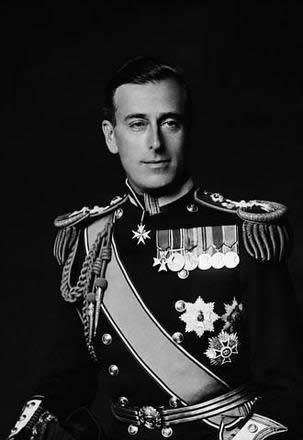
Lord Mountbatten
Nehru’s emotional attachment to the Mountbattens deeply vitiated the Kashmir issue. It was certainly the most important factor for the failure to find a solution in the first years of the conflict. The British officer, Mountbatten, who was working for the interest of the British Crown was now at the helm of the administrative defense machinery and the British generals serving in India still reported to him.
Due to the Joint Command held by the Commander-in-Chief, Mountbatten certainly knew of Pakistan’s plan to attack J&K on 22 October. It is a surprise that Nehru was unaware; or probably aware but ignored the matter to teach a lesson to the Maharaja.
In the case of Kashmir issue, Nehru took the command in his hand (for rest of India it was done by Sardar Patel) and rather consulted Mountbatten and other English Generals. The British initially had the intention to cede J&K to Pakistan. It became apparent when the British Officers supported the Pakistan Army to capture the Gilgit-Baltistan region.
While the Government of India accepted the ‘IoA,’ (on Mountbatten’s suggestion) it added the proviso that it would be submitted to a “referendum” after the state is cleared of the invaders. The National Conference, headed by Sheikh Abdullah, endorsed the accession.
At the time of Indian independence, the tribal-jihadi invasion shook the order of the valley and Pakistan was controlling the northern part of Kashmir. In the north of the state lay the Gilgit Agency. Gilgit’s population did not favor the State’s accession to India. Sensing their discontent, Major William Brown, the Maharaja’s commander of Gilgit, mutinied (on Mountbatten’s behest) in a bloodless coup, overthrowing the Governor Ghansara Singh. Major Brown asked Khan Abdul Qayyum Khan of Pakistan to take over Gilgit-Baltistan.
In Kashmir, Sheikh Abdulla was given the power while Maharaja Hari Singh was reduced to a ceremonial head ‘Sadr-e-Riyasat’, but he was still the man who had signed the accession papers.
On the other side, Jinnah cried that India acquired the accession through “fraud and violence,” and the States should accede according to their majority population and sought for a plebiscite. When Mountbatten countered that the plebiscite could be conducted by the United Nations, Jinnah, hoping that Pakistan might lose a fair plebiscite, rejected the proposal. Prime Ministers Nehru and Liyaqat Ali Khan met again in December when Nehru informed Pakistan of India’s intention to take the dispute to the UN on 1st January 1948, thereby making it an international issue.
Sardar Patel was furious. But at this precise point in time, Patel (who had looked after the relations with other princely states) was sidetracked and since then Kashmir affairs went from bad to worse. In pain, on December 23, he wrote his resignation but was prevented (by Gandhi) from pressing for it.
In retrospect, it can be well concluded that despite Nehru’s love for high principles, his inability to take decisions in time, his incapacity to work with colleagues like Patel, and his personal terms with individuals such as the Mountbattens or Abdullah (who had their own interests), blinded him so much that he could not further India’s national interests. The consequences have been tragic and the muddle created 70 years ago remains far from being sorted out.
Part -2: THE CONSTITUTIONAL MISADVENTURES
In UN, India accused Pakistan of sending both regular troops and tribesmen into J&K. It led to the establishment of the United Nations Commission in India & Pakistan (UNCIP) to assess the claims and counterclaims. In early 1948, during the UN hearings, the British showed where their interests lay.
In the meantime, an emergency government was formed on October 30, 1948, with Sheikh Abdullah as the Prime Minister. Sheikh soon adopted a very aggressive attitude towards the Maharaja (who was eventually humbled) and made to leave the state. Soon, he issued a proclamation vesting all his power in his son, Yuvraj Karan Singh.
Sheikh Abdullah started showing his true colors and declared in an interview to a foreign correspondent (given to Michael Davidson of Scotsman, dated 14th April 1949):
“The accession to either side cannot bring peace. We want to live in friendship with both Dominions. An Independent Kashmir must be guaranteed not only by India and Pakistan but also by Britain, the United States and other members of the United Nations. Yes, independence – ensured by the United Nations – may be the only solution.”
Everyone was horrified. Sardar Patel not only took note of it but also communicated to Nehru without mincing his words. Patel also advised Abdullah not to indulge in such gimmickry and must desist from speaking to the press, in the interest of Kashmir and the country. But both Nehru and Gopalaswamy Ayyangar got in the business of covering up. Nehru wrote to Patel:
“I entirely agree with you that some of the statements that Sheikh Abdullah made regarding Maharaja were very indiscreet and should not have been made. He is not a very clear thinker, and he goes astray in his speeches as many of our politicians do.”
The UN Resolution, (a two-part process) was proposed for the withdrawal of forces. In the first part, Pakistan was to withdraw its troops as well as other Pakistani nationals (tribes) from the state. In the second part, it clarified, “when the Commission shall have notified the Government of India” that Pakistani withdrawal has been completed, India was to withdraw the bulk of its forces. After both the withdrawals were completed, a ‘plebiscite’ would be held.” India declared the ceasefire on 1st January 1949, and the cease-fire line became the Line of Control (LOC).
The assistance given by Pakistan to the Jehadis and the further involvement of the Pakistan Army was considered to be a hostile act and was held to be an invasion of Indian Territory. On the other hand from the Indian perspective, the plebiscite was meant to confirm the accession. Pakistan could not stand on an equal footing with India in the contest. Pakistan falsely cried that the Azad Kashmir movement (including the tribal incursions), were spontaneous and indigenous. Hence, Pakistan’s assistance to them was not open to criticism.
The Security Council regarded the dispute as a purely political disregarding the merits of the case. Declassified British papers indicate that the Cold War calculations of both Britain and the US had influenced their policy in the UN, without investigating its legal underpinnings.
In 1950, India adopted its constitution and treated Kashmir as a ‘special’ part of India and Article 370 came into force.
To pass any law or abolish Article-370 it should first be adopted in J&K assembly and by this scenario, it was made almost impossible. Severe rigging and malpractices were carried out by Sheikh Abdullah and his Govt during the first election of State in 1951. A Jan-Sangh affiliate, Praja Parishad raised the voice of Jammu people, but they were not even recognized as a political party to contest the election. National Conference won all 75 seats. The motion of acceptance of an openly rigged election was moved in the Parliament and in spite of a severe opposition, it was adopted by the Parliament.
The independence led to the transfer of power from the Jammu-based ruler to Kashmir based leadership.
In 1952, a broad arrangement called the Delhi Agreement was reached. The State Constituent Assembly also approved it. The Indian constitution was swiftly sidelined. The state legislature was given the powers to make laws for conferring special rights and privileges on the state subjects. The Union Govt. also agreed that the state should have its own flag (surprisingly resembling National Conference symbol) in addition to Union flag and the executive head of the State was called the Prime Minister of the state.
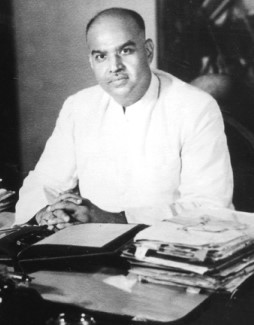
Dr. Syama Prasad Mukherjee
A protest was launched in Jammu by Praja Parishad, which witnessed brutal onslaught on the protesters. Shyama Prasad Mukherjee, President of the Bhartiya Jana-Sangh, proceeded to Jammu. The central plank of the agitation was ‘एक देश में दो विधान; दो निशान; दो प्रधान नहीं चलेंगे’ (“in one country, two constitutions; two flags; two prime ministers”, would not be tolerated).
One person was shot dead, and several others were severely injured for trying to remove the state flag. Dr. Shyama Prasad was arrested on the 11th of May, 1953 and was left without medical care in Srinagar and died in mysterious circumstances in custody on the 23rd June, 1953. The movement had lost its heart. Nehru did visit Kashmir a few days earlier but could not find the time to call on his former Cabinet colleague. A nationwide wave of anger against Sheikh Abdullah emerged. Nehru’s own standing in public also suffered.
Sheikh remained Nehru’s friend till his scheming became too dangerous for India as well as for Nehru. In the summer of 1953, the infamous episode of Sheikh Abdulla’s double distrust emerged. After losing the presidential election to Eisenhower, the American Democrat Adlai Stevenson came to India. He had quite a comprehensive brief from the State Department that probed India’s neutrality, about Nehru’s character and Kashmir’s fate. Stevenson and his aides had lunch with Abdulla and his cabinet and discussed ‘Communism in Kashmir.’ Abdulla asked Stevenson American money to build Kashmir. But the Indian intelligence was keeping a close eye on Abdulla. As Stevenson left Kashmir for Pakistan, the matter came in the press that he has ‘won Abdulla over to the supposed American policy of Independent Kashmir.’
Sheikh Abdulla was charged with conspiring against India and helping Pakistan to annex J&K and inciting jihad and was finally dismissed by Karan Singh, the Sadar-i-Riyasat and was at Gulmarg on 8th of August, 1953.
Gulam Bakshi Mohammad was sworn in as next Prime Minister of the State. Apart from his other misdeeds (taking a commission on Govt contracts etc.), Gulam Bakshi understood that closer constitutional links between the Union and the State had to be forged. He put a closer to the obstructive attitude of the State Govt regarding the implementation of the Delhi agreement.
Following the overthrow of Abdullah, his lieutenant Mirza Afzal Beg formed the Plebiscite Front(PF) to fight for the plebiscite as well as an unconditional release of Sheikh Abdullah. PF did not have any direct affiliation with NC, but Sheikh was its mentor, and it was considered to be an offshoot of NC. PF supported Congress and regularly protested against Gulam Mohammed Bakshi’s regime. G. M. Shah, the secretary of PF, was Sheikh’s son-in-law and stood by him in difficult times. Sheikh was released in January 1958 but soon rearrested in April.
In Delhi, Nehru felt guilty of Sheikh Abdullah’s lengthy incarceration. Balraj Puri mediated a dialogue between Nehru and Abdullah. Sheikh Abdullah declared that he had led the state’s accession to India and was bound by whatever he said. Nehru welcomed the statement.
In the meanwhile, Indian PM Jawaharlal Nehru held talks with Pakistan’s PM Muhammad Ali Bogra and agreed for a Plebiscite Administrator by April 1954. However, according to Nehru, Pakistan’s entry into the CENTO alliance was an expression of Pakistan’s insincerity in resolving the issue. Since then, India became lukewarm to the idea of a plebiscite. India took the stand that the Constituent Assembly of J&K, which was democratically elected in 1951, had ratified the state’s accession, and therefore, any referendum was unnecessary.
In 1962, troops from China and India clashed. China won a swiftly resulting in Chinese annexation of the region. China received about 35,000 square kilometers in Aksai Chin in the 1962 war with India which has continued since then. Pakistan also ceded another 5,000 sq km in Gilgit-Baltistan under a treaty signed in March 1963.
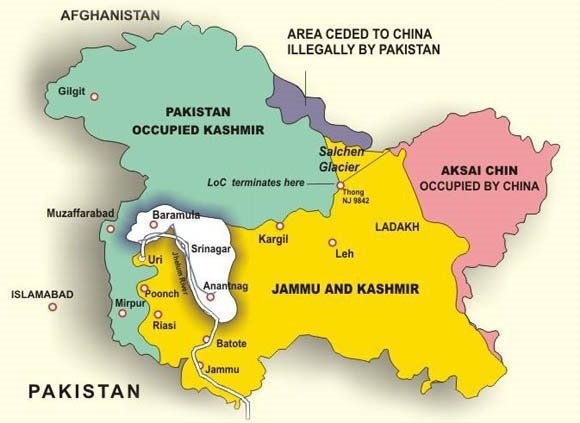
A famous anecdote: About the loss of Aksai Chin, Nehru said in Parliament “not a single blade of grass grows there.” Mahavir Tyagi, a senior Congress leader, pointed to his bald head and said: Nothing grows here…. should it be cut off or given away to somebody else?” Such was the level of Foreign Affairs understanding of our distinguished Prime Minister.
Time passed by, but everything post-China war reminded Nehru of the humiliating defeat. Nehru made his final reckless attempt to release Sheikh for one last time despite severe backlash in Delhi.
Nehru sent Abdullah to meet Ayub Khan. The proposal was to have a confederation of India, Pakistan, and Kashmir which was contemptuously rejected by the Pakistani military ruler as ‘absurd’. Nehru’s last attempt to solve the Kashmir issue had failed.
Nehru died on 27th of May, 1964 before Sheikh Abdullah’s return from the mission.
The Lal Bahadur Shashtri Govt considered that the constitutional integration of the State was more pertinent than the emotional integration with the rest of India. A series of constitutional amendments were ruled despite widespread opposition. With the concurrence of a flexible State Assembly, Article 355 and 356 of the Constitution were made applicable to the State by which the Center could assume the Govt of the State and exercised the legislative powers. The nomenclature of Prime Minister to Chief Minister of the State was changed to the uniformity in the country. The Governor was now to be nominated by the center instead of being selected by the state legislature.
Ostensibly, in February 1965, Sheikh Abdullah went abroad with his wife for the purpose of Haj. But during this visit, he indulged in another political overreach which was highly embarrassing to India. He met Chou En-lai, the Prime Minister of China. His passport was, therefore, canceled. On his return, he was arrested at Delhi airport on May 9, 1965.
In 1965, Pakistan decided that the conditions were ripe for a successful guerilla war in Kashmir, code named ‘Operation Gibraltar.’ About 30,000 infiltrators were dispatched into Kashmir, the majority of these irregular forces were the Mujahideen recruited from PoK and trained by the Army.
The plan was to mingle with the locals and incite them to Jihad on communal lines. The guerilla warfare commenced, destroying tunnels, bridges, and highways, as well as Indian Army installations and airfields. With the newly acquired sophisticated weapons through the US arms aid, Pakistan hoped that it could achieve tactical victories in a limited war. The myth was also created for an ‘armed insurrection’ in Kashmir. But the attempt failed. Pakistan believed to have raised international attention to the Kashmir issue.
However, the `Operation’ ended in failure as the Kashmiris did not revolt and the regular Pakistan Army ended up fighting the Indian Army. Pakistan claimed that the captured militia were Kashmiri `freedom fighters,’ a claim contradicted by the international media.
On the 1st of September 1965, Pakistan again launched an attack across the Cease-Fire Line. India broadened the war in response, by launching an attack on Pakistan across the international border. Pakistan was thrashed. The USSR brokered honestly with its particular interest in the region, as it was apprehensive of China’s increasing influence in the area. Both the sides withdrew following the Tashkent Agreement and agreed not to interfere in each other’s internal affairs. The political atmosphere in the Valley also cooled down.
The liberation movement in Bangladesh gained momentum at the end of 1971. At the request of Sheikh Mujibur Rehman, India moved into Bangladesh. The rest is history.
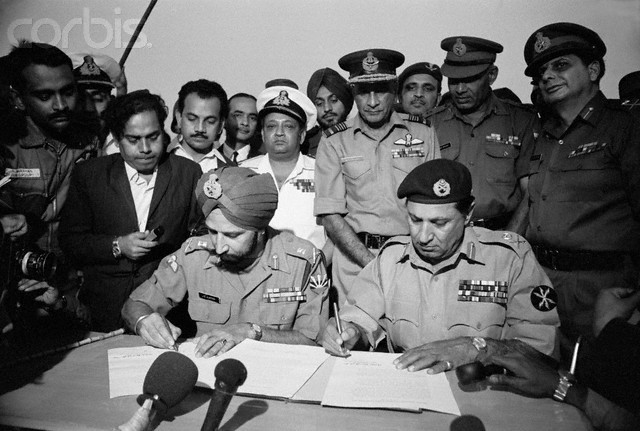
16 Dec 1971, Pakistani Army Surrenders at Dhaka, Bangladesh. Image by Bettmann/CORBIS
The war ended with a spectacular victory for India. Bangladesh came into being. After the conflict, Mrs. Indira Gandhi, the Prime Minister of India, and Zulfikar Ali Bhutto, the President of Pakistan, held bilateral discussions, as a result of which the ‘Shimla Agreement’ was formulated and signed by the two countries on the 3rd of July 1972.
The agreement contained the following features:
“That the two countries are to resolve their differences by peaceful means through bilateral negotiations or by any other peaceful means mutually agreed upon between them. Indian and Pakistani forces shall be withdrawn to their side of the International Border. In Jammu and Kashmir, the line of control resulting from the Cease-Fire of December 17, 1971, shall be respected by both the sides without prejudice to the recognized position of either side.”
The 1971 war had such a humiliating impact on Pakistan that their vehemence for Kashmir to Pakistan or Independent Kashmir diminished. Now the attitude of Abdullah and other leaders also underwent a change. They started making conciliatory speeches.
Mrs. Indira Gandhi also considered it expedient to arrive at some reconciliation with Sheikh Abdullah. Negotiations started between them in 1972. After three years of protracted talks, Kashmir Accord was signed on February 24, 1975. The accord accepted the state of J&K as the part of Union of India which was to continue to be governed by the Article 370 of the Constitution of India and have residuary powers of legislation.
The Congress Chief Minister at that time, Syed Mir Qasim, made space for the Sheikh by resigning, and Sheikh Abdullah was sworn in as Chief Minister on February 25, 1975, for one more time.
More than the ordinary Kashmiri, the accord affected the fate of the members of a particular party; the ‘Plebiscite Front’. One of the key terms of the accord was that the Plebiscite Front should be shut down, and thus the demand for a plebiscite. Afzal Beig and G. M. Shah were very upset but expected to be compensated. Ironically, in 1981 when Sheikh crowned his son Farooq to be the next CM, Afzal Beig resigned into oblivion. G. M Shah, however, continued in NC, quietly cheesed-off.
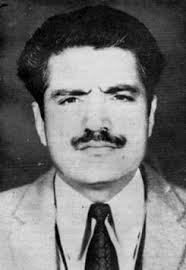
First terror poster boy of Independent India – Maqbool Bhat
Earlier, in 1966 the first terror poster boy of Kashmir, Maqbool Bhat, and other JKNLF militants, ambushed police, and one local Crime Branch CID Inspector, Amar Chand was killed. Maqbool Bhat and Kala Khan were arrested for the murder and found guilty and subsequently sentenced to death. However, in 1968, Bhat, along with two others, managed to dig a tunnel under the Srinagar prison, and escaped to Pakistan. The Peoples Front also swung towards national liberation and Maqbool Bhat was elected its president.
In 1971, Bhat was accused of masterminding the hijacking of a Passenger Airline to Lahore and the perpetrators announced its affiliation with JKLF under the leadership of Bhat. Pakistan arrested him after Indian Govt. banned Pakistan flights of flying over Indian airspace. In 1974, he sneaked into India where he was again captured and made to serve his old sentence.
Both India and Pakistan had other significant domestic problems which kept Kashmir on the backburner. In 1975 Indira Gandhi declared a state of national emergency, but she was defeated in the 1978 general elections. Zulfikar Ali Bhutto was overthrown and hanged in 1977; Pakistan reverted to military dictatorship under Gen Zia ul Haq.
In June 1977, a relatively fair election took place in J&K which marked a breakthrough and helped in the emotional integration of the Valley with the rest of India. Its impact continued for almost a decade till the Jihadi forces remained quiet. In Kashmir, the problem appeared resolved for the first time.
In the meanwhile, Sheikh Abdullah passed away on the 8th of September, 1982 and as expected, Dr. Farooq Abdullah succeeded him as Chief Minister. Mrs. Gandhi wanted Farooq Abdullah to contest the 1983 election with Congress which he rejected citing sympathy votes for his party after the death of his father. The June 1983 Assembly elections again returned NC to power, but the internal quarrels had not dissipated.
The politically sharp Indira Gandhi appointed Jagmohan (a Nehru-Gandhi family loyalist) as the Governor of J&K. The defection of the G.M. Shah led to the fall of Farooq Abdullah’s govt. And G.M. Shah (NC-K) assumed power with the support of the Congress-I from outside. Things were in better control.
Probably, this was the time while growing up in the eastern part of India; we would listen to the soul tickling song “कितनी खूबसूरत ये तस्वीर है, मौसम बेमिसाल बेनज़ीर है, ये कश्मीर है, ये कश्मीर है ,” (What a beautiful sight! What awesome weather! Oh This is Kashmir! This is Kashmir!) and envy.
Part -3: Problem Re-Invented
Unfortunately, Mrs. Gandhi was assassinated in 1984. Rajiv Gandhi succeeded her as the Prime Minister of India. Farooq Abdullah’s loss of power saw an upsurge in the activities of fundamentalist and communal forces in the valley. There was a persistent growth in the Muslim fundamentalist activities in the state.
Earlier, on February 3, 1984, one Indian diplomat in the UK named Ravindra Mhatre was kidnapped in Birmingham, England. Demand for the release of Bhat was put forward by the kidnappers. On February 6, 1984, JKLF militants killed the Indian diplomat. In response, Bhat’s petition for clemency was rejected by Indira Govt. and Bhat was hanged in the Tihar Jail on the 11th of February 1984 and buried in the Jail premises.
The State witnessed severe communal violence during this period which paved ways for the imposition of Governor’s rule, followed by President’s rule on 7 September 1986. The Jagmohan Malhotra’s tenure as Governor of J&K (1984–89), saw Kashmir in much peace, and the local masses liked him for his no-nonsense approach.
Soon the Rajiv-Farooq accord followed, and a coalition government of NC and Congress came into being in November 1986 with Farooq Abdullah as CM.
This Rajiv-Farooq Accord was the foundation stone of the ‘Modern Kashmir Crisis’, and its chief architect was Bharat Ratna Ratna Rajiv Gandhi (for systematically turning a blind eye to the intelligence reports coming to the PMO about terrorists and Jihadis flexing muscle in the Valley) and of course, Dr. Farooq Abdullah.
In the run-up to the 1987 State elections, several religious Muslim political organizations for a plebiscite (Jamaat-e Islami, Anjuman-Tahfaz-ul-Islam, Jamaat-e-Tulba, Jamiat-Ahl-e-Hadis, Ummat–e-Islami, Ittihad-al-Muslimeen, and the Muslim Employees Front) banded together to form the Muslim United Front (MUF). Their election campaign revolved around commitment to Islamicise Kashmiri society with the imposition of Nizam-e-Mustafa (system based on Islamic Shariah) in Kashmir.
The MUF in 1987 contested the Assembly elections but won only 4 out of 43 electoral constituencies. The election was severely rigged by the ruling alliance NC and the Congress.
Somehow the status quo was maintained until 1988. But when the prestige of Dr. Farooq’s government started suffering, in June 1988, spontaneous demonstrations were held to protest against his govt. Police retaliated, and three people died. Two bomb blasts targeting the Central Telegraph Office, and the TV station were engineered. Next month, on August 14, Pakistan’s Independence Day was celebrated, and a BANDH was organized on August 15, India’s Independence day.
Dr. Farooq was clueless. He would either be found in London or when back in the state, releasing 70 plus hardcore terrorists. These dreaded terrorists, trained in the handling of dangerous weapons, had contacts at the highest level in PoK. Their detention was approved by the three-member board presided over by the Chief Justice. Their simultaneous release helped them to occupy key positions in the terror network.
The Governor Jagmohan kept the Prime Minister Rajiv Gandhi fully apprised of the developing situation. He wrote to him saying:
“The drum-beater of parochialism and fundamentalism are working overtime. Subversion is on the increase. The shadows of events from across the border are lengthening. Lethal weapons have come in. More may be on the way”. In April 1989, I had desperately pleaded for immediate action I said: “The situation is fast deteriorating. It has almost reached a point of no return. For the last five days, there have been large-scale violence, arson, firing, hartals, casualties and what not. Things have truly fallen apart. Talking of the Irish crisis, British Prime Minister Disraeli had said: “It is potatoes one day and Pope the next”. Similar is the present position in Kashmir. Yesterday, it was Maqbool Bhat; today it is Satanic Verses; Tomorrow it will be repression day and the day after it will be something else. The Chief Minister stands isolated. He has already fallen-politically as well as administratively; perhaps, only constitutional rites remain to be performed. His clutches are too soiled and rickety to support him. Personal aberrations have also eroded his public standing. The situation calls for effective intervention. Today may be timely, tomorrow may be too late”.
– from Jagmohan’s Open Letter to Rajiv Gandhi.
Shockingly, Rajiv Gandhi did not respond or intervene. For sheer vote-bank politics (Shah Bano Case is another glaring example), the Kashmir Valley was systematically handed over to the Jihadi terrorists by the Rajiv-Farooq duo.
Congress lost the election at the center (courtesy Bofors Scam), and V P Singh succeeded him, whose government removed Jagmohan from the Governorship of J&K.
In 1989, Jihadi sentiments reached a new high. The jihadi militancy in Kashmir acquired a new terrorist character in 1989. The first political murder took place in Srinagar on 21st August when the block president of NC Mr. Yusuf Halwai was gunned down. On 14th September, the first Kashmiri Pandit to be murdered was BJP leader Tika Lal Taploo. On November 4, JKLF militants shot dead judge Neelkanth Ganjoo, who had sentenced Maqbul Bhat to death.
The militants gained further when the government reacted to their kidnapping of Rubaiya Sayeed, daughter of Home Minister, Mufti Mohammad Sayeed on December 8, 1989. The National Front Govt acted in sheer panic and agreed to release five dreaded imprisoned Jihadi leaders in exchange. There are unsubstantiated claims that this kidnapping was ‘sate-managed.’
The quest for ‘Azadi’, had been overtaken by proclamation of ‘Jihad’. The cold, dark night of January 19, 1990, had stirred into life the worst nightmares of non-Muslims, especially the Kashmiri Pandits living in the valley. Screaming from loudspeakers and crowded streets was a message for the Sikhs and Hindus living in Kashmir:
“Zalimo, O Kafiro, Kashmir harmara chhod do. Kashmir mein agar rehna hai, Allah-ho-Akbar kahna hoga. La Sharqia la gharbia, Islamia! Islamia! Musalmano jago, Kafiro bhago! Islam hamara maqsad hai, Quran hamara dastur hai, jehad hamara Rasta hai! Kashir banawon Pakistan, Bataw varaie, Batneiw saan!!
Meaning:
“O! Merciless, O! Kafirs leave our Kashmir. Anyone wanting to live in Kashmir will have to convert to Islam. From East to West, there will be only Islam. O! Muslims, Arise, O! Kafirs, scoot. Islam is our objective, Quran is our constitution, Jehad is our way! We will turn Kashmir into Pakistan along with Kashmiri Pandit women, but without their men.”
Here’s an excerpt of Col Tej Kumar Tikoo’s book, “Kashmir – It’s Aborigines and Their Exodus,” describing the fateful night:
“As the night fell, the microscopic community became panic-stricken when the Valley began reverberating with the war-cries of Islamists, who had stage-managed the whole event with great care; choosing its timing and the slogans to be used. A host of highly provocative, communal and threatening slogans, interspersed with martial songs, incited the Muslims to come out on the streets and break the chains of ‘slavery’. These exhortations urged the faithful to give a final push to the Kafir in order to ring in the true Islamic order. These slogans were mixed with precise and unambiguous threats to Pandits. They were presented with three choices – Ralive, Tsaliv ya Galive (convert to Islam, leave the place or perish). Tens of thousands of Kashmiri Muslims poured into the streets of the Valley, shouting ‘death to India’ and death to Kafirs…
Kashmiri Pandits were systematically eliminated by the terrorists in the name of Jihad. The holy war didn’t spare even children. This ethnic cleansing of Kashmiri Pandits was reported by a handful of Indian Media. Barely, two-three line news was carried out and that too somewhere in the 14-15th page.
The Kashmiri Pandits have been forced to live the life of exiles in their own country, outside their homeland. Every time the govt proposed of rehabilitating Pandits in Kashmir valley, Hardcore Islamic Terrorist outfits warned Kashmiri Pandits of dire consequences. The J&K Govt and the Govt of India have failed squarely to protect the Kashmiri Pandits.
The gradual extinction of a civilized community with an ancient culture is yet to shake the conscience of the world, especially the leading International Human Rights Organisations like Asia Watch, Amnesty International, and others. They have also failed the KPs and are yet to take proper cognizance of the genocide perpetrated on KPs.
By December 1990, around 300 more govt employees including 131 security personnel were killed by Jihadi Terrorists. It generated unprecedented fear psychosis among the govt employees and paralyzed the normal functioning of the administration. An efforts to float a United Front, politically through the J&K Tehrik-e-Hurriyat and on the militancy side, through the United Jehad Council, both pro-Pakistan bodies, suffered due to the JKLF remaining outside their purview.
But the intelligentsia and overground sympathizers of this ‘Jihadi -movement’ kept guiding the militants from behind the scenes.
However, notwithstanding the growing manifestations of public displeasure with violence and doubts over Pakistan’s real intentions, there was hardly any dilution in the fervor for ‘Jihad.
The Central Govt, in February 1991, offered to hold talks with militants and secessionists for the first time, within the framework of the Indian Constitution. The militant outfits spelled out impossible conditions as preconditions for talks. They purposely escalated targeted violence, whenever the Government took steps to initiate the political process.
The year 1992 again witnessed a sharp rise in the level of violence with militants increasingly targeting the security forces. The violence reached a peak when it was speculated that the Central Govt was considering to hold elections in the State.
After the Najibullah Govt had fallen in Afghanistan, a process of systematic propaganda was launched encouraging infiltration of a large number of Pakistan-trained Afghan Mujahideen.
A considerable change in the public mood and temper was observed after a long time with people openly started expressing resentment against militancy. It was plainly a result of inter-group clashes, killing of innocent civilians, extortion, rapes and mindless torching of property. The secessionist leaders (Gillani, A.G. Lone, Maulvi Abbas Ansari, Abdul Ghani Butt, etc.) made some efforts to give the Jihad a political orientation. But most of the militant outfits including HuM and JKLF were of the view that armed struggle should be continued simultaneously.
Meanwhile, the demolition of the disputed structure at Ayodhya (6 December 1992) provided a boost to the militant groups that Muslim interests are not safe in India.
The genuine moves by the Central Govt (under PM Narasimha Rao) to initiate the political process in the State, caused grave concern in the Jihadi circle. HuM militants shot dead several political personalities including Wali Mohd Itoo (18 March 1994) to send a warning signal.
1994-95 also witnessed the emergence of the ‘Harkat-ul-Ansar’ (HUA) that imposed a ban on the ‘Amarnath Yatra’. This ban was again imposed in 1995 in retaliation for the ‘destruction’ of Charar-e-Sharief shrine, and they also killed one of the kidnapped foreigners (a Norwegian national) in a very brutal manner.
The Lok Sabha and State Assembly elections were held successfully, and a government was formed under the leadership of Dr. Farooq Abdullah. The Hurriyat leaders started making efforts to incite dissensions in the party.
After a gap of nine years, the elections for six parliamentary seats in J&K were concluded successfully in 1996. The voter turnout was better than the national average and decisively rejected attempts by secessionist forces to disrupt the elections and also the gun culture propagated by the Islamic jihadists.
In the early Vajpayee era, after the successful conclusion of elections, the ISI chalked out a new strategy to target duly elected peoples’ representatives and election campaigners to destabilize the democratically elected government. In April 1997, a new militant outfit, Tehrik-e-Jehad (TEJ) was launched to step up Islamic terrorism by increasingly inducting foreign mercenaries. Intelligence inputs indicated that a move by a section of HUA militants to join the TEJ following a declaration of HUA as a terrorist organization by the US.
ISI supported the Islamists by augmenting their arsenal with sophisticated weaponry including anti-aircraft guns, rocket launchers, machine guns, and explosives; the security forces retained absolute dominance over militant groups. A large number of terrorist leaders were neutralized.
The growing dissension within the Hurriyat and continuing discord between its leaders and terrorist outfits were a jolt to Pakistan for having failed to impart the desired momentum to the secessionist movement. The 1998 Parliamentary elections in J&K served to further the public mood against militancy indicating an increasing urge among the masses to associate with the democratic process.
The hardliner, S.A.S. Gillani took over as Hurriyat Conference’s chairmanship from Maulvi Umar Farooq. The Jamaat-e-Islami’s (the guiding spirit behind the terrorist activities of the HuM), organizational activities were jeopardized by the mounting pressure from the security forces, forcing its cadres to go on the run.
Gillani’s visit before the Kargil conflicts to the bordering areas of PoK on the directives of the Pakistan High Commission in January 1999 was aimed at changing the demography of the area.
The same strategy of targetted attacks killing the Hindus residing in isolated pockets in the Valley as well as Jammu to evoke a communal backlash adopted. The brutal killing of 23 KPs on 26 January 1998 at Wandhama, 26 Hindus on 17-18 April at Parankote (Udhampur), and the Chapnari incident in which 25 Hindus were butchered, and in the Doda district on 19th of June are indicative of Islamic Jihad.
Directives were issued to jihadi militants to avoid harassing the local people, to give handsome payment to them for the services rendered, and try to win over influential local Muslims.
Many summit level meetings have taken place between India and Pakistan and its leaders, but the most important one was the meet in February 1999 between then Pakistan Prime Minister Nawaz Sharif and Prime Minister of India, Atal Behari Vajpayee. In the famous ‘Lahore-Declaration’ signed by both of them, the two governments agreed to:
“intensify efforts to resolve all issues including the issue of J&K; refrain from intervention and interference in each other’s internal affairs; take immediate steps to reduce the risk of unauthorized or accidental use of nuclear weapons and to undertake confidence-building measures in the nuclear field; and condemn terrorism in all its forms and to combat this menace.”
On one hand, Nawaz Sharif extended the hand of ‘friendship’, on the other hand, the Pakistani Army led by General Pervez Musharraf was quietly planning the operations resulting in the Kargil conflict. It was an attempt to deliberately undo what was agreed upon 27 years ago between the two neighboring countries under the Simla agreement.
All hopes of diplomacy disappeared with the full-fledged India-Pak Kargil War. Pakistan was again slapped with the same fate of war but the death toll, including both soldiers and civilians, was more than 30,000.
Pakistan and Islamists took desperate measures in J&K post-Kargil especially after the army coup in October 1999. Pakistan Army openly supported the terrorist groups that encouraged the Islamic radicals to resort to suicide squads (fidayeen) to demoralize the security forces.
The pinpointed attacks on Army Headquarters, Badami Bagh (2 Nov 1999); SOG headquarters Srinagar (27 Dec 1999); the infamous hijacking of the IC-814 (24 Dec 1999); the sector headquarters of R.R., Srinagar (12 Jan 2000); and the massacre of 35 Sikhs at village Chattisingpura, in Anantnag district (21 March 2000) tell the scale of terrorist activities.
The ISI made further efforts in the new millennium to forge unity among the Islamic terrorist groups operating in J&K. At the instance of the Pakistan Army, an organization under the commandership of Syed Salahuddin was floated. On the other hand, the leadership of Harkat-ul-Mujahideen (HuM) was given to Moulana Farooq Kashmiri to give a ‘Kashmiri face’ to the Jihadi movement. Moulana Masood Azhar (earlier general secretary of the Harkat-ul-Ansar) announced the formation of Jaish-e-Muhammad (27 January 2000, Islamabad).
Stress was laid on the religious indoctrination of the cadres. The focus of the training schedule is to inculcate the ‘spirit of Jihad’ and to make the terrorists feel ‘that the path to Jannat’ (heaven) runs through the battleground. The “Jihadisation” of the militancy had been one of the core components of the Kashmir conflict for a century.
The secessionists including the Hurriyat made every effort to stall the elections. On one side, anti-poll campaigns and congregations were held, while terrorists resorted to killings of candidates and other individuals associated with the elections. The monetary funding from Pakistan to stall the Lok Sabha elections also remained the cause of dissension among the Hurriyat leadership.
Despite increasing incidents of violence, the elections were held in a reasonably free and fair atmosphere. National Conference bagged four seats and the BJP two seats. In the meanwhile, KJHC leaders (S.A.S. Gillani, Prof. Bhat, and Maulana Abbas Ansari, etc.) were detained under PSA in Sept 1999 and the activities of KJHC remained at a low ebb in that period.
In 2000, largest terrorist group, the Hizbul–Mujahideen, declared a unilateral ceasefire against the Indian forces witnessing its retaliatory mood. In 2001, a report titled “Pakistan’s Role in the Kashmir Insurgency” (from the American RAND Corporation) was published. The think tank expressed that the “nature of the Kashmir conflict had been transformed from a local conflict to one that is largely carried out by foreign militants and radicalized pan-Islamic religious terms.”
The Pakistan state policy also shifted a bit, and its aggressive stance mellowed after the “9/11 attacks”. Everyone’s hatred toward terrorism intensified after the 9/11 and Pakistan were told on an international scale to put an end to terrorism.”
In 2001, a terrorist attack on the Indian Parliament, which was conceptualized in Pakistan, resulted in war threats. Massive troops were deployed, and there was a fear of a nuclear war emerged. After intensive diplomatic efforts by other countries, India and Pakistan began to withdraw troops from the international border in June 2002, and negotiations restarted.
The European Union held the view that a plebiscite is not in Kashmiris’ interest. The report said that the conditions (set by UN) for such a plebiscite could no longer be, met by Pakistan. Even the Hurriyat observed that a “plebiscite was no longer an option” in 2003. But the Jihad continued. Once again on 23 March 2003, at Nadimarg, 24 Kashmiri Pandit’s were massacred.
From 26 November 2003, India and Pakistan agreed to maintain a ceasefire along the LoC near the Siachen glacier. It was the first such “total ceasefire” declared by both powers in nearly 15 years. Restarting the bus service between the Indian and Pakistani also helped defuse tensions between the countries.
The 2005 Kashmir earthquake that killed over 80,000 people further led to India and Pakistan deciding for the opening of a road for disaster relief through Kashmir. But again in March 2008, 17 people were severely injured when a bomb blast hit the state’s only highway overpass located near the civil secretariat, and the high court. A gun battle between security forces and Islamic terrorists left five people dead and two others injured. In 2008, a total of 85 security personnel and 89 Jihadis died.
Massive demonstrations occurred after plans by Jammu and Kashmir state government to transfer 100 acres of land to the Amarnath Temple Trust to be used to build a shelter to house Hindu pilgrims during their annual pilgrimage. Indian security forces and the Indian army tried to maintain the order. More than 40 Jihadi protesters were killed and at least 300 were detained. The pro-independence leader Mirwaiz Umar Farooq warned this heavy-handed crackdown on protesters of severe consequences.
In November 2008, the Mumbai attacks took place that was launched and planned by the mastermind Zakiur Rehman Lakhwi from Pakistan.
At the same time, in spite of calls by separatists for a boycott, State elections were also held with an unusually high turnout. The NC again emerged victoriously, and on 30th December, the Congress and NC agreed to form a coalition government, with Omar Abdullah as the youngest Chief Minister of the state.
In March 2009, Omar Abdullah said that only 800 militants were active in the state and out of these, only 30% were Kashmiris. The rape and murder of two young women in South Kashmir pointed suspicion towards the police as the perpetrators. A judicial inquiry confirmed the suspicion, but a CBI inquiry reversed their conclusion. It gave fresh impetus to popular agitation.
In 2010, ISI again ‘boosted’ Kashmir militants, and recruitment of the Mujahideens in the Pakistan state of Punjab had increased. A ‘Quit Jammu & Kashmir Movement’ was launched by the Hurriyat led by Syed Ali Shah Geelani and Mirwaiz Umar Farooq. Protesters shouted Islamic slogans, defied curfews, attacked security forces with stones and burnt police vehicles and government buildings. The J&K Police and Indian para-military retaliated with “pallet Guns and bullets” to control the situation, resulting in 112 deaths.
The then Chief Minister, Omar Abdullah absolved his Govt and said: “anti-national forces with vested interests are doing this. It takes two hands to clap. Youth should not instigate the forces. People are getting paid to go to the streets and throw stones.” He also accused the chairman of Hurriyat Conference Mirwaiz Farooq of the violence.
In 2011, the FBI revealed that ISI paid millions of dollars into a United States-based NGO to influence politicians and intelligentsia on the Kashmir issue and arrested Syed Ghulam Nabi Fai.
A similar revelation was made by the former Indian army chief Gen. V K Singh in 2013 claiming that the state politicians of Jammu and Kashmir are funded by the ISI to keep the general public calm and that this activity has been going on since Partition.
In April 2012 when PM Manmohan Singh and President Asif Ali Zardari held the first high-level talks in seven years. The irony is that each crisis between India and Pakistan had been followed by an attempt at diplomatic rapprochement, which has all turned out to be fiascos. At least a dozen summits have been held between the two Govts and their heads toward the resolution of the Kashmir problem, but nothing worth was ever achieved. The prime and only reason are that the “Kashmir struggle” is only a euphemism for jihad and “Azadi ka matlab .. La Illaha Illa Allah” (Independence means the imposition of Islamic Sharia state).
In 2013 the secret hanging of Muhammed Afzal Guru (convicted Parliament attack in 2001) by India led to a widespread protest and a violent crackdown by the Kashmiri government.
The J&K Legislative Assembly election was held in 2014. Once again, despite repeated boycott, the elections recorded highest voters’ turnout in last 25 years. The EU in its message said that “the high voter turnout figure proves that democracy is firmly rooted in India.”
Since then small-arms and mortar exchanges have left several civilians dead and wounded both in India and Pakistan.
On 8 July 2016, a dreaded yet popular terrorist Burhan Muzaffar Wani was cornered and killed by the security forces. Following his death, severe protests and demonstrations, like before, have taken root leading to an “amplified instability” in the Kashmir valley once again. Over 60 Jihadi protesters died and over 1000 injured in clashes with the police amidst curfew. Many have pellet gun injuries who may lose their eyesight. More than 3300 security forces are also injured, and some are fighting for life in ICU.
In 2016, the same Omar Abdullah’s diametrically opposing stand on police retaliation in 2010 (quoted above) when he was the Chief Minister of the state, exposing his own hypocrisy says: “What happened after Burhan Wani’s killing is the result of our own mistakes. Mehbooba Mufti chooses to tacitly support the excessive force in the valley. You can’t risk alienating the people of Kashmir and seeks to engage the people.”
The BJP-PDP government in J&K is an alliance of opposites. But knowing Congress and National Conference and their past track record, you never know who would ally with the Muftis just to remain in power. That would be a disaster. It’s a pain in the neck for BJP too for it losing perception of allying with the hardliners. But, ignoring electoral brownies and for them to remain a part of the J&K Government as a check, is in the national interest. It can be seen in recent remarks of Mehbooba Mufti. She is showing courage, forthrightness & passion, unlike the loquacious Abdullah’s.
Prime Minister Narendra Modi, so far has check-mated Pakistan with his diplomatic genius. His latest ‘Balochistan-Twist’ seems to be a master-stroke. There are several hurdles. But the messaging is clear.
If one recalls the history of Kashmir for the last one century, and beyond, it can be well concluded that the terrorism and militancy in the valley was never a ‘Freedom Struggle’ at all. Cleansing of Kashmiri Pandits and Sikhs from Kashmir is a clear testimony of this fact. There is no freedom which impinges upon other’s freedom. Kashmir’s problem isn’t Freedom, Secession, Wani or Pellet Guns. It is out and out ISISism and Islamic Jihad and the refusal of democracy to seek Sharia.
References:
1. An Outline of the History of Kashmir
2. How many of us know about the truth?
3. Truth about the martyrs of Kashmir’s July 13 carnage
4. J&K Interlocutors, Indian Constitution and the Dustbin
6. 10 Mistakes of Jawaharlal Nehru
4. Terror Unleashed – An Exhibition on Kashmir
5. Jagmohan’s Open Letter to Mr. Rajiv Gandhi
6. Kidnapping of Rubaiya Sayeed staged – Ex-militant.
9. Prankote Massacre – ‘The village resembled a ghost area with beheaded bodies lying scattered’
11. Militants Kill 16 Hindus in Doda
12. Paying ministers nothing new in J&K
13. Pakistan’s Role in the Kashmir Insurgency by Peter Chalk
14. Violence in Srinagar over land allotment to Amarnath board
15. Kashmir toll 97 in 100 days of unrest (2010)
16. Kashmiris Storm the Street, Defying Curfew
17. Why Pakistan is ‘boosting Kashmir militants’ – BBC 3rd March 2010
– See more at: https://www.myind.net/century-and-beyond-kashmir-conflict-remains-euphemism-islamic-jihad#.dpuf
